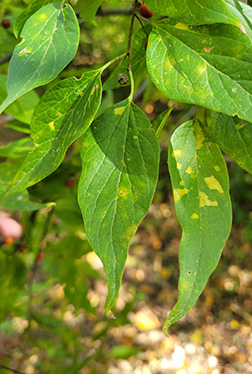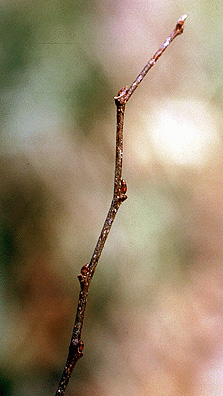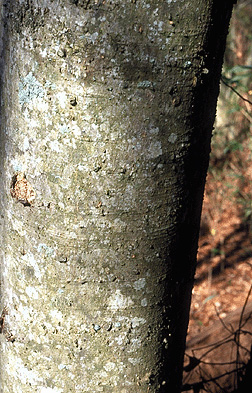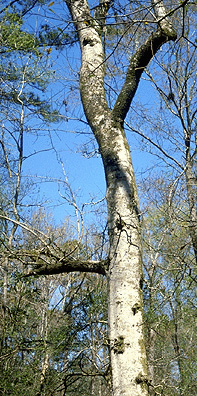 Virginia Tech Dendrology
Virginia Tech Dendrology
sugarberry Ulmaceae Celtis
laevigata var. laevigata Willd.
![]()
![]() symbol: CELAL
symbol: CELAL
Leaf: Alternate, simple, pinnately veined, 2 to 5 inches long, 1 to 2 inches wide, long acuminate tip, only upper half of leaf or less serrated (maybe entire), three distinct veins meet at the inequilateral base.
Flower: Very small (1/8 inch), greenish-white, produced on stalks near twig, appearing in spring.
Fruit: Fleshy, globose, 1/4 to 3/8 inch in diameter, orangish red turning purple when ripe, stalks short, maturing in fall.
Twig: Slender, zigzag, reddish brown, speckled with lighter lenticels, lateral buds are tightly appressed and triangular in shape, pith usually chambered at nodes.
Bark: Gray to light brown, smooth with corky "warty" patches, does not develop ridges, as does hackberry, although it is highly variable.
Form: Medium size tree to 80 feet tall, several feet in diameter, broad crown in open with drooping branches.
Looks like: netleaf hackberry
- hackberry
- American elm
- dwarf hackberry
Additional Range Information: Celtis laevigata var. laevigata is native to North America. Range may be expanded by planting. Download the full-size PDF map.
More Information: Wood
External Links: USDAFS Silvics of North America - USDAFS FEIS Silvics - USDA Plants Database - Horticulture Information - USDAFS Forest Products Lab
All material 2021 Virginia Tech Dept. of Forest Resources and Environmental Conservation; Photos and text by: John Seiler, Edward Jensen, Alex Niemiera, and John Peterson; Silvics reprinted from Ag Handbook 654; range map source information





